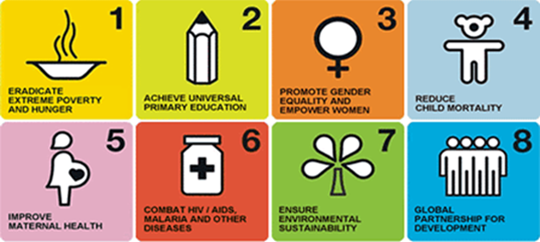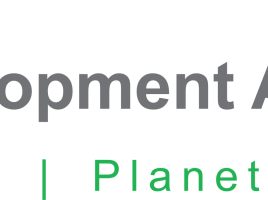MDGs : An Indian Perspective
One of the core strengths of the Millennium Development Goals (MDGs) has been the shaping of the global development agenda by laying down priority action areas through mobilising opinion worldwide. By creating time-bound 18 targets it has ensured a concerted effort towards the same. In India’s case the goal of universal primary education achieved the 95 percent target (measured by the Net Enrolment Ratio) in the year 2008-09. The poverty ratio fell to 21.9 percent in the year 2012 (Planning Commission Report) and access to safe drinking water was achieved in 2007-08. While energy intensity has shown a considerable decrease over last 13 odd years, the forest cover has increased by nearly 21 percent (Government of India, 2012).
In India, the National Five Year Plans, the National Development Goals (2005) National Common Minimum Programme (2004) and several other initiatives such as the National Rural Employment Guarantee Act (2006), Jawaharlal Nehru National Urban Renewal Mission (2005-06) amongst others try to integrate the MDGs into their framework in an effort to create a new development pathway for the country.
However, an analysis of the MDG framework in India which shows improvement with respect to some targets also highlights several deficiencies. In particular the latest two official country reports namely, Millennium Development Goals: India Country Report 2011 and Millennium Development Goals: States of India Report 2010, show considerable uneven progress in the achievement of the MDG targets country-wide.
While noble in their goals the MDGs have been largely donor-driven and therefore can at times fail to take local needs into account. This is particularly a handicap for a country like India which has various minority groups such as the Scheduled Castes, Scheduled Tribes, Dalits, Muslims, Christians amongst others needing special attention. The relatively high economic growth rates experienced by the country over the last decade, has been marked with a rise in income inequality. As per the National Sample Survey Organisation, average income of the richest is 12 times that of the poorest in the urban areas in 2000, increasing 15 times in 2012 thus dispelling the theory of the trickle-down effect. This necessitates the inclusion of relative poverty in MDGs.
Furthermore, India has a highly skewed gender ratio of 914 females for every 1000 males (Census, 2011). As per the Gender Adjusted Human Development Index (2013), India is the second worst performer in South Asia next to Afghanistan. Only 29 percent of labour force comprises of women (above 15 years of age) as opposed to nearly 81 percent for males. The problem is accentuated by a lack of a systemic/integrated approach towards the global development agenda. For example the gender issues are clearly stated in goal 3 relating to gender parity and 5 relating to maternal mortality rates and universal access to reproductive health. However, its inter-linkages with poverty, vulnerability and the play of power and responsibility are not properly explored. In order to achieve pro-poor sustainable development, the MDG framework has to mainstream the concerns of women to its agenda. The poor framing of its gender targets does not adequately cover discriminations/issues faced by women such as equal pay and opportunity of jobs, safety/modesty of women amongst others and therefore, has to be corrected.
Hence, the MDG framework needs to be more responsive to address specific problems of the country. For this purpose the scope of the MDGs may have to be increased. For example, while the target for universal primary education may have been achieved the drop-out rates are very high. Furthermore, other aspects such as quality of education, student-teacher ratio, school infrastructure are not explicitly investigated. Concerns with respect to quality of other social services such as healthcare facilities, provision of free medicines also need attention. India faces many policy and governance challenges such as overlapping responsibilities between the state and central government resulting in poor implementation and accountability. The MDG framework does not address such issues in its goals.
Another weakness of the MDG framework is that despite stating the priority action areas it does not lay down the methods to achieve the same. Moreover, even the data for a lot of the indicators are suspect raising concerns on accurate measurement of actual progress.
It is hoped that the post-2015 development agenda learns from the successes and shortfalls of the MDGs and is more holistic and inclusive of the triple-bottom line.
This article originally appeared in Outreach – a multistakeholder magazine.





Leave a Reply